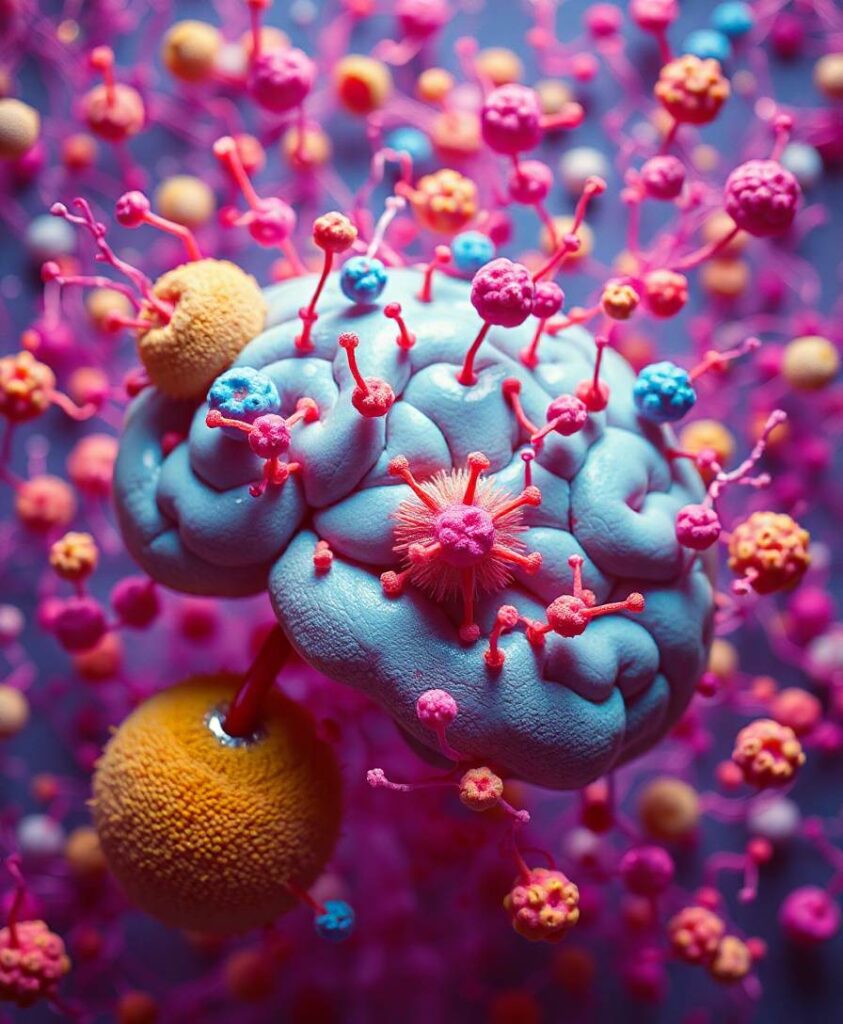BackgroundWith the increase of age, multiple physiological functions of people begin gradually degenerating. Regardless of natural aging or pathological aging, the decline in cognitive function is one of the most obvious features in the process of brain aging. Brain aging is a key factor for several neuropsychiatric disorders and for most neurodegenerative diseases characterized by onset typically occurring late in life and with worsening of symptoms over time. Therefore, the early prevention and intervention of aging progression are particularly important. Since there is no unified conclusion about the plasma diagnostic biomarkers of brain aging, this paper innovatively employed the combined multi-omics analysis to delineate the plasma markers of brain aging.MethodsIn order to search for specific aging markers in plasma during cerebral cortex aging, we used multi-omics analysis to screen out differential genes/proteins by integrating two prefrontal cortex (PFC) single-nucleus transcriptome sequencing (snRNA-seq) datasets and one plasma proteome sequencing datasets. Then plasma samples were collected from 20 young people and 20 elder people to verify the selected differential genes/proteins with ELISA assay.ResultsWe first integrated snRNA-seq data of the post-mortem human PFC and generated profiles of 65,064 nuclei from 14 subjects across adult (44–58 years), early-aging (69–79 years), and late-aging (85–94 years) stages. Seven major cell types were classified based on established markers, including oligodendrocyte, excitatory neurons, oligodendrocyte progenitor cells, astrocytes, microglia, inhibitory neurons, and endotheliocytes. A total of 93 cell-specific genes were identified to be significantly associated with age. Afterward, plasma proteomics data from 2,925 plasma proteins across 4,263 young adults to nonagenarians (18–95 years old) were combined with the outcomes from snRNA-seq data to obtain 12 differential genes/proteins (GPC5, CA10, DGKB, ST6GALNAC5, DSCAM, IL1RAPL2, TMEM132C, VCAN, APOE, PYH1R, CNTN2, SPOCK3). Finally, we verified the 12 differential genes by ELISA and found that the expression trends of five biomarkers (DSCAM, CNTN2, IL1RAPL2, CA10, GPC5) were correlated with brain aging.ConclusionFive differentially expressed proteins (DSCAM, CNTN2, IL1RAPL2, CA10, GPC5) can be considered as one of the screening indicators of brain aging, and provide a scientific basis for clinical diagnosis and intervention.


